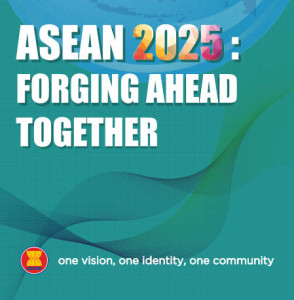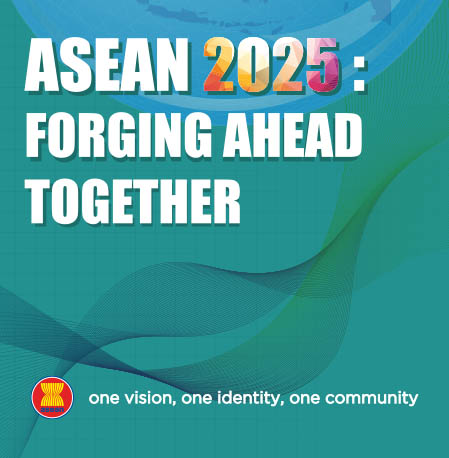 The Association of Southeast Asian Nations (ASEAN) envisions transport cooperation that fosters regional competitiveness and inclusive growth by the year 2025 through a comprehensive strategy of ensuring greater connectivity, efficiency, integration, safety, and sustainability in the logistics sector.
The Association of Southeast Asian Nations (ASEAN) envisions transport cooperation that fosters regional competitiveness and inclusive growth by the year 2025 through a comprehensive strategy of ensuring greater connectivity, efficiency, integration, safety, and sustainability in the logistics sector.
During the formal establishment of the ASEAN Economic Community 2015 at the recent 27th ASEAN Summit in Kuala Lumpur, Malaysia, leaders of the region adopted the ASEAN Community Vision 2025 for the region’s political-security community, economic community, and socio-cultural community for the next 10 years.
The vision—also called ASEAN 2025: Forging Ahead Together—succeeded the 2009-2015 roadmap to an ASEAN Community.
Under the ASEAN Economic Community 2025, ASEAN transport cooperation is seen to remain focused on land transport, air transport, maritime transport, and transport facilitation, and “to embrace sustainable transport as a new key sectoral focus as it has a vital role to play in the sustainable development of the ASEAN region.”
For the maritime sector, strategic development measures include establishing an ASEAN Single Shipping Market (ASSM) and promoting maritime safety, security, and strategic economic corridors.
Specifically, the blueprint calls for strengthening connectivity through the ASSM regional maritime transport cooperation and implementation of International Maritime Organization conventions. These efforts are expected to produce an integrated, efficient, and competitive maritime transport, and foster a culture of maritime safety. The blueprint also recommends that strategic maritime logistics corridors be developed.
For the air sector, ASEAN 2025 proposes strengthening the ASEAN Single Aviation Market “for a more competitive and resilient ASEAN.” Measures proposed include those that will advance safer and more secure skies in ASEAN; enhance air traffic management efficiency and capacity through a seamless ASEAN sky; and foster of greater connectivity, including concluding aviation agreements with dialogue partners.
For land transport, the goal is to establish an efficient, safe, and integrated regional land transport network within ASEAN and with neighboring countries in support of trade and tourism. The blueprint proposes land transport infrastructure (road and railway) integration and intermodal interconnectivity, with links among principal airports, ports, and inland waterways and ferries. It also seeks concerted and coordinated efforts at policy and operational levels in developing ASEAN land transport trade corridors.
Multimodal transportation
To facilitate transport, the ASEAN 2025 blueprint wants to establish an integrated, efficient and globally competitive logistics and multimodal transportation system “for seamless movement of passengers by road vehicles and cargos within and beyond ASEAN.”
Achieving this, ASEAN said, would require rolling out four pacts: the ASEAN Framework Agreement on the Facilitation of Goods in Transit, ASEAN Framework Agreement on the Facilitation of Inter-State Transport, ASEAN Framework Agreement on Multimodal Transport, and ASEAN Framework Agreement on Facilitation of Cross-Border Transport Passengers by Road Vehicles.
Skills development
The region must also enhance capacity and skills development to make further progress in regional transport facilitation cooperation as well as transport facilitation beyond ASEAN.
Finally, for a sustainable transport system, the blueprint bats for a regional policy framework to support sustainable transport that underscores low carbon modes of transport, energy efficiency and user-friendly transport initiatives, integration of transport, and land-use planning.
These measures, ASEAN said, “will prove that by facilitating to expand economic opportunities and services, and providing people with access and mobility, transport contributes to inclusive growth of new business opportunities, including MSMEs (micro, small, and medium enterprises), and is a key enabler for the attainment of full potential of regional economic integration.” – Roumina Pablo





